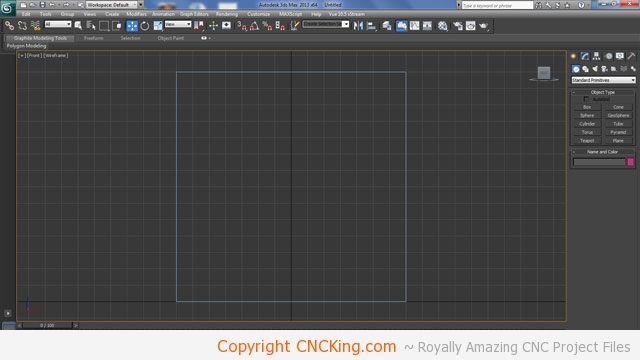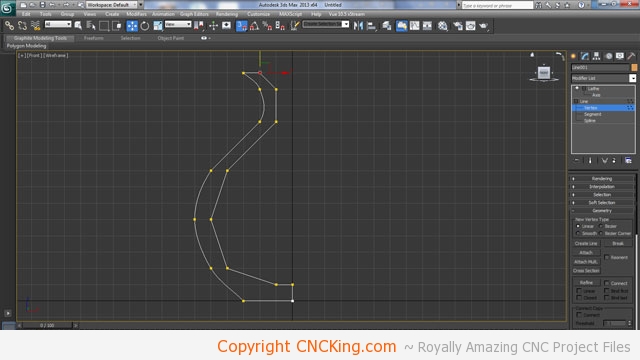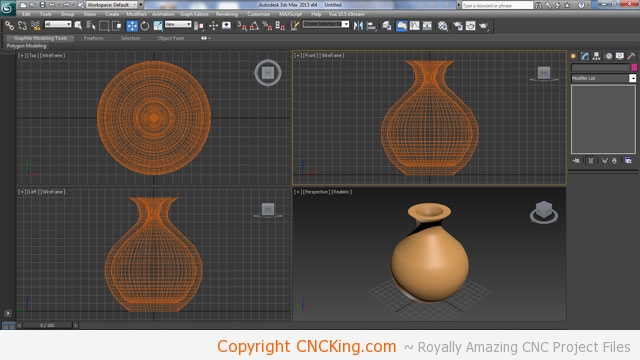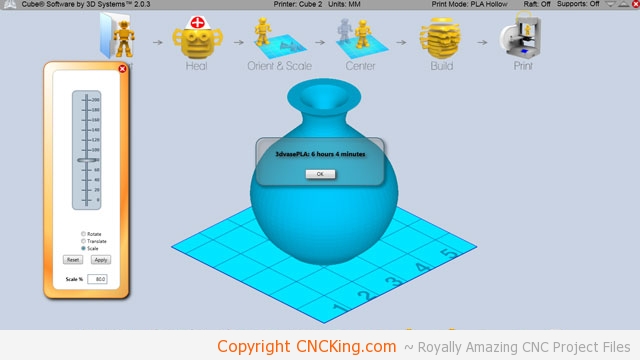How to make a simple 3D printed vase
If you are curious as to how I made my 3D printed vase – design wise – read on!
Making a 3D printed vase is among the simplest objects to master and easiest to personalize… I’m going to teach you how I made it step by step!

First step is to establish your volume parameters – I do this with a cube… dimentions are relative so it doesn’t really matter what size the cube is as long as it’s equal on all axis (X, Y, Z)

As I’m going to lathe this object – something supported by just about any 3D modeling program out there – all I need to do is create a 2D spline. It will then be spun around 360 degrees to create the vase. At this point I don’t care too much about the details of the spline, as long as I have the general shape, I can modify this later to suit my needs.

Now that the vase is created, I can get rid of the cube as I know my object will fit withiin my platform’s limits and start to smooth it out a bit, unless I’m looking to make a cubic vase. Keep in mind that the more segments I have, the smoother “around” the vase will be. Think of it this way, the more segments an object has around 360 degrees, the smoother it will be. 4 segments spun round would form a square vase while 360 segments would be extremely smooth as the reference spline would be created every 1 degrees. If you decided to make this vase out of 10 000 000 segments, it wouldn’t be any smoother than one made out of 1 000 segments though – going over the capacity of the human body to feel/see or machine to produce doesn’t produce more results, it just takes longer to print without any noticeable difference.

I now have a round vase, I changed the vertex to smooth and increased the segments around 360 degrees to 60. We now have a new issue to deal with, the inside. As you can see in the previous step, I have a vase but the inside of it is rather small – all that extra volume will be 3D printed – taking that much longer to print and costing more money in material. The solution is to go back to the spline and make the inside edge follow the exterior surface closer.

All that I have left to do now is make the inside as smooth as the outside and spin it around again to see the results. I hate using supports I build this model in such a way that no inside angle exceeds roughly 30-45 degrees and as this object is round – it won’t need any.

I now have my vase – I’ve left the outside edge thicker for two reasons. First is that I want this model to be strong, the thinner the sides, the weaker the structure and secondly, I want this model to have some weight to it. This is for an extrusion 3D printer… best to give yourself some extra tolerance and clearance. If this was for an industrial SLA 3D printer, then I could make this just a few mm without too much concern.

Before we print it, let’s export the STL, scale it to fir the platform and produce a build file in my Cubify software. 6 hours… not bad!
